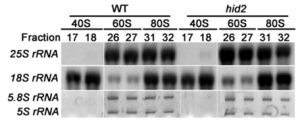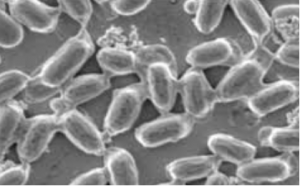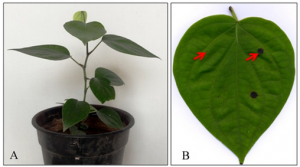|
Positive-negative-selection-mediated gene targeting in rice.
Monday, 2015/01/26 | 08:04:22
|
|
Shimatani Z, Nishizawa-Yokoi A, Endo M, Toki S, Terada R.
Front Plant Sci. 2015 Jan 5;5:748. doi: 10.3389/fpls.2014.00748. eCollection 2014. http://www.ncbi.nlm.nih.gov/pubmed/25601872
Abstract
Gene targeting (GT) refers to the designed modification of genomic sequence(s) through homologous recombination (HR). GT is a powerful tool both for the study of gene function and for molecular breeding. However, in transformation of higher plants, non-homologous end joining (NHEJ) occurs overwhelmingly in somatic cells, masking HR-mediated GT. Positive-negative selection (PNS) is an approach for finding HR-mediated GT events because it can eliminate NHEJ effectively by expression of a negative-selection marker gene. In rice-a major crop worldwide-reproducible PNS-mediated GT of endogenous genes has now been successfully achieved. The procedure is based on strong PNS using diphtheria toxin A-fragment as a negative marker, and has succeeded in the directed modification of several endogenous rice genes in various ways. In addition to gene knock-outs and knock-ins, a nucleotide substitution in a target gene was also achieved recently. This review presents a summary of the development of the rice PNS system, highlighting its advantages. Different types of gene modification and gene editing aimed at developing new plant breeding technology based on PNS are discussed.
FIGURE 1. Schematic diagram of various gene modifications by PNS-mediated GT. (A) The brown box indicates the gene to be targeted on a genome sequence shown as black lines. The brown arrow represents the promoter of the gene. (B) PNS vector for GT. The green arrows are the negative markers; the red arrow is the positive marker. The pink box is the transcriptional stop sequence of En/Spm. The gray arrows are loxP sequences. Double-headed arrows under the vector indicate the homology regions for HR. The blue line is T-DNA sequence. (C) HR process for GT between the target gene and PNS vector. The thick lines of black and blue indicate newly synthesized DNA sequences in genome and T-DNA, respectively. (D) Gene knock-out of the target gene by insertion of a positive marker with En/Spm, which can be removed via subsequent Cre-loxP recombination caused by introduced Cre gene (yellow arrow). (E) Reactivation of knock-out gene in (D) by Cre-loxP recombination. (F) Nucleotide(s) substitution (red lines), insertion, and deletion in the target gene can be induced by designing a homology arm in the PNS vector in (B) and subsequent positive marker elimination by Cre-loxP recombination in (D). (G) Gene knock-in modification where the endogenous promoter sequence is connected to the GUS coding sequence (indicated as a blue box with En/Spm). (H) Gene knock-in modification where the mOrange coding sequence, indicated as an orange box, is connected precisely to the stop codon of the target gene; both endogenous promoter activity and protein localization of the target gene are detectable. (I–K) Diagrams of segregated plants from knock-in T0 into homozygote (I), heterozygote (J), and wild type (K). GUS expression image as blue leaves is shown in (I,J). Dwarf phenotype in (I) is a reflection of the disrupted target gene. |
|
|
|
[ Other News ]___________________________________________________
|


 Curently online :
Curently online :
 Total visitors :
Total visitors :
(20).png)



















